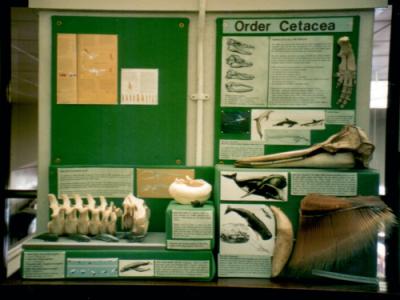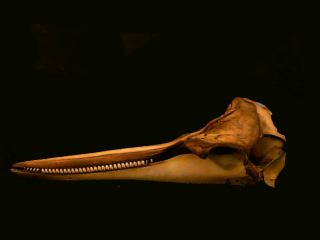
CETACEA: THE WHALES The whales are some of the best-loved, most endangered and least 'mammal-like' of all the mammals. From the 'smiling' dolphins to the enormous blue whale, the largest animal the world has ever known, they are a truly remarkable group. The first whales are found in Eocene deposits, and they already show features such as the progression of the nostrils towards the forehead and the reduction of the hind limbs. By the end of that epoch the whales had undergone rapid evolution to become fully marine. Modern whales show many adaptations to their ocean environment. The nostrils have become a 'blowhole' on the upper surface of the head, the forelimbs have become flippers, the body streamlined and largely hairless, the hind limbs are completely absent, the tail muscular and fluked for propulsion and the ear bones modified to hear underwater. Cetaceans have been grouped into three sub-orders: the Archæoceti (the most primitive whales, all extinct), the Odontoceti (the toothed whales) and the Mysticeti (the baleen) whales. However, recent research has shown that sperm whales are more closely related to the baleen whales than to other toothed whales.
The dolphin skull shows just how different whales have become from their terrestrial relatives. The teeth are small and sharp for catching fish. The space in front of the forehead is occupied by the 'melon', the organ used in echolocation - the sounds dolphins emit to 'see' their surroundings. |








